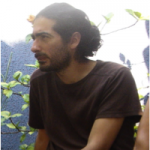Link to Pubmed [PMID] – 15758198
Cereb Cortex 2005 Dec; 15(12): 1900-13
The convolutions of the mammalian cortex are one of its most intriguing characteristics. Their pattern is very distinctive for different species, and there seems to be a remarkable relationship between convolutions and the architectonic and functional regionalization of the cerebral cortex. Yet the mechanisms behind the development of convolutions and their association with the cortical regionalization are poorly understood. Here we propose a morphogenetic model for the development of cortical convolutions based on the structure of the cortex as a closed surface with glial and axonal fibres pulling radially, the fundamental mechanical properties of cortex and fibres (elasticity and plasticity), and the growth of the cortical surface. The computer simulations of this model suggest that convolutions are a natural consequence of cortical growth. The model reproduces several aspects of convolutional development, such as the relationship between cortical surface and brain volume among mammals, the period of compensation in the degree of convolution observed in gyrencephalic brains and the dependence of the degree of convolution on cortical thickness. We have also studied the effect of early cortical regionalization on the development of convolutions by introducing geometric, mechanic and growth asymmetries in the model. The morphogenetic model is thus able to reproduce the gradients in the degree of convolution, the development of primary, secondary and tertiary convolution, and the overproduction of sulci observed in animals with altered afferent cortical connections.

